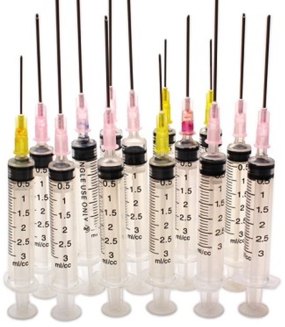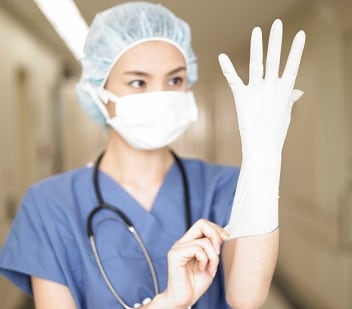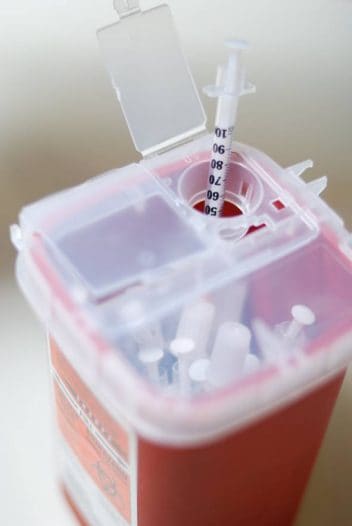Bloodborne Infectious Diseases: HIV/AIDS, Hepatitis B, Hepatitis C
Exposure to blood and other body fluids occur across a wide variety of occupations. Healthcare workers, emergency response and public safety personnel, and other workers can be exposed to blood through needlestick and other sharps injuries, mucous membrane, and skin exposures.
The bloodborne pathogens of primary concern are the human immunodeficiency virus (HIV), hepatitis B virus (HBV), and hepatitis C virus (HCV). Workers and employers should take advantage of available needle- and sharps-free equipment, work practices, engineering controls including safety-engineered sharps, and personal protective equipment to prevent exposure to blood and other body fluids.
Emergency Sharps Information

Photo by Getty Images
Workers
As you work, you may experience:
- A needlestick or sharps injury.
- An exposure to patient blood or other body fluid.
If any of these occur, take the following steps:
- Wash needlesticks and cuts with soap and water
- Flush splashes to the nose, mouth, or skin with water
- Irrigate eyes with clean water, saline, or sterile irrigants
- Report the incident to your supervisor
- Immediately seek medical treatment
Medical Providers
If you have questions about proper medical treatment for workplace exposures:
- Call the Clinicians’ Post Exposure Prophylaxis (PEP) Line at 1-888-448-4911
Or
- Go to: http://www.nccc.ucsf.edu/
Safety-Engineered Sharps Devices, Personal Protective Equipment, Engineering Controls

Photo by Getty Images
It is vital for healthcare workers to be informed about the ways to protect patients when providing medical services and ways to protect themselves. Always consider the following:
- Elimination or substitution
- Work practices and administrative controls
- Engineering controls
- Personal protective equipment
Elimination or Substitution
Eliminate sharps or substitute with equipment that does not cause puncture wounds or lacerations. In some cases, healthcare workers can reduce the risk of transmitting bloodborne pathogens by eliminating sharps devices and substituting with non-sharp devices. Examples include:
- Needle-free medication delivery systems
- Blunt surgical suture needles
Work Practices and Administrative Controls
Policies and procedures can help protect healthcare workers from bloodborne pathogens. These include:
- An exposure control plan. This plan should identify work practices at risk of exposure to bloodborne pathogens.
- Policies to reduce exposures risks. Examples include:
- Clearly labeling biohazardous waste
- Procedures for safely disposing biohazardous waste
- Regularly disposing sharps containers that are filled
- Protocols to follow when exposure occurs.

Photo by Getty Images
Engineering Controls
Engineering controls are important for protecting against bloodborne pathogen hazards. Types of engineering controls include:
- Sharps disposal containers – These containers are made with puncture-resistant plastic or metal. They have specially designed lids that only allow sharps to be deposited. They are not large enough for a hand to enter. It is important to place sharps disposal containers in areas where needed and making sure they are not overfilled.
- Safety-engineered sharps devices – Using safety-engineered sharps devices can prevent injuries and resulting infections with bloodborne pathogens in both patients and healthcare workers. Safety-engineered devices include features that provide protection especially when the device is not in use and during disposal. Examples include:
- Retracting needles
- Sliding sheaths
- Hinged needle shields
Personal Protective Equipment (PPE)
Administrative and engineering controls are preferred methods of protecting healthcare workers. However, using PPE such as gloves are a part of routine patient care. When protecting against bloodborne pathogens by touching patients and surfaces or splashes and sprays of blood and body fluids, PPE may include:
- Facial protection such as masks or face shields (when needed for respiratory hazards, some respirators may also provide facial protection)
- Eye protection such as goggles or glasses with side protection
- Gloves
- Gowns and other protective clothing
